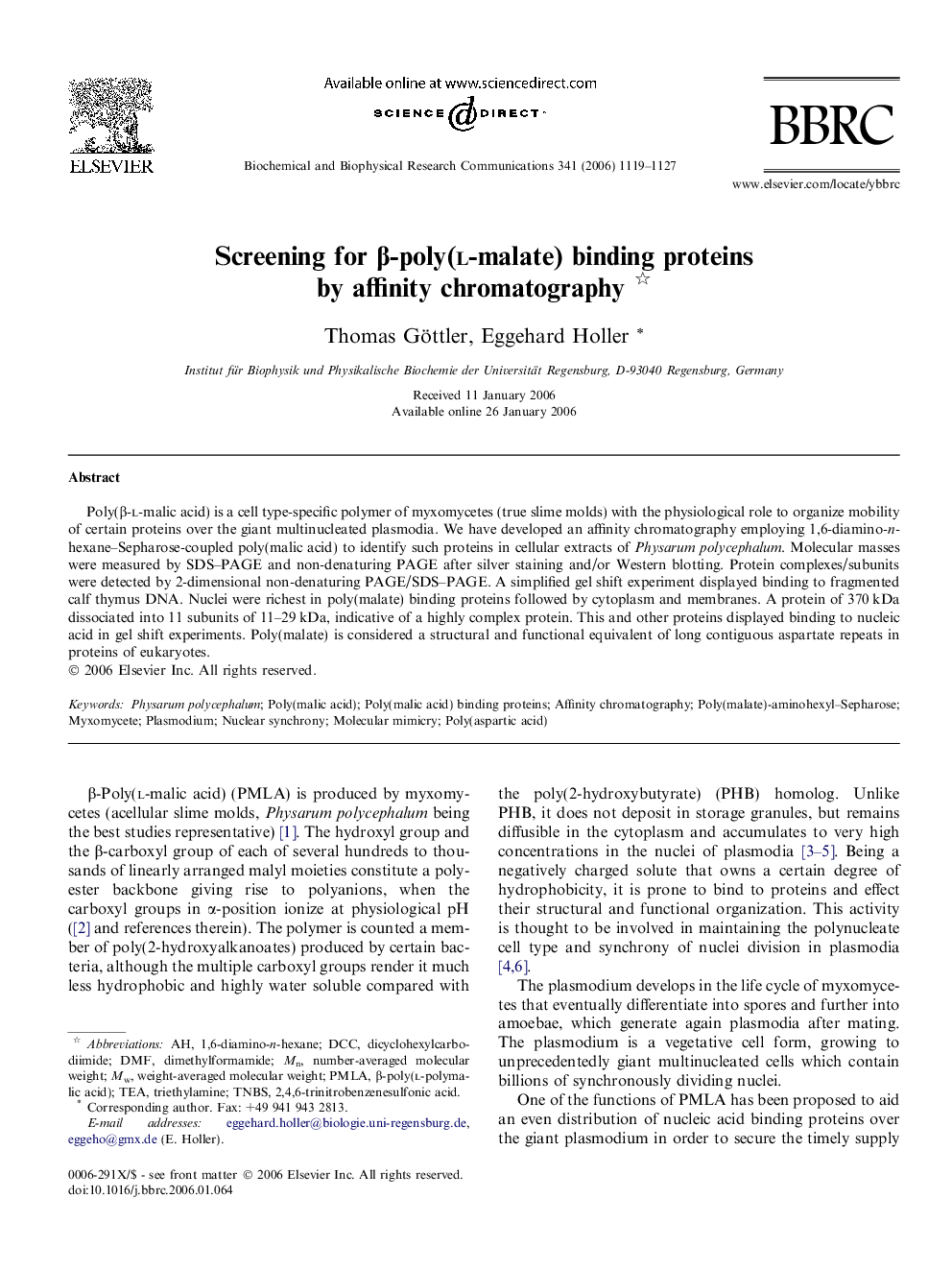| Article ID | Journal | Published Year | Pages | File Type |
|---|---|---|---|---|
| 1941250 | Biochemical and Biophysical Research Communications | 2006 | 9 Pages |
Poly(β-l-malic acid) is a cell type-specific polymer of myxomycetes (true slime molds) with the physiological role to organize mobility of certain proteins over the giant multinucleated plasmodia. We have developed an affinity chromatography employing 1,6-diamino-n-hexane–Sepharose-coupled poly(malic acid) to identify such proteins in cellular extracts of Physarum polycephalum. Molecular masses were measured by SDS–PAGE and non-denaturing PAGE after silver staining and/or Western blotting. Protein complexes/subunits were detected by 2-dimensional non-denaturing PAGE/SDS–PAGE. A simplified gel shift experiment displayed binding to fragmented calf thymus DNA. Nuclei were richest in poly(malate) binding proteins followed by cytoplasm and membranes. A protein of 370 kDa dissociated into 11 subunits of 11–29 kDa, indicative of a highly complex protein. This and other proteins displayed binding to nucleic acid in gel shift experiments. Poly(malate) is considered a structural and functional equivalent of long contiguous aspartate repeats in proteins of eukaryotes.
